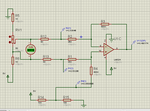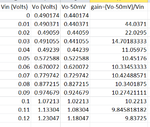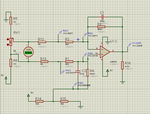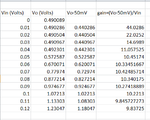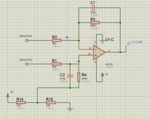pravin b
Member level 5
- Joined
- May 20, 2012
- Messages
- 85
- Helped
- 2
- Reputation
- 4
- Reaction score
- 1
- Trophy points
- 1,288
- Location
- Mumbai, India
- Activity points
- 2,083
@KlausST
however please help me clear some of my doubts (it may sound stupid but please...)
1. what was wrong with the earlier chosen values for differential voltage simulation; i.e. in post #16 (except placement of 4K resistor)? It was made for 0-150mV.
2. Still with this set up I get gain of 10 for voltages above 50mV. Why not for voltages <50mV?
3. Why 4K only? How can I calculate which value is to be used? Because it is difficult to find the resistor of 4k & 36K in electronics market!
4. How can I add offset at the output?
5. Can you suggest me a further reading on the subject so that I can improve myself?
Thanks & please make me understand the things.
@crutschow: Thanks buddy. But I would not like to loose my focus from the ongoing discussion right now. Though I appreciate your help.
however please help me clear some of my doubts (it may sound stupid but please...)
1. what was wrong with the earlier chosen values for differential voltage simulation; i.e. in post #16 (except placement of 4K resistor)? It was made for 0-150mV.
2. Still with this set up I get gain of 10 for voltages above 50mV. Why not for voltages <50mV?
3. Why 4K only? How can I calculate which value is to be used? Because it is difficult to find the resistor of 4k & 36K in electronics market!
4. How can I add offset at the output?
5. Can you suggest me a further reading on the subject so that I can improve myself?
Thanks & please make me understand the things.
@crutschow: Thanks buddy. But I would not like to loose my focus from the ongoing discussion right now. Though I appreciate your help.
